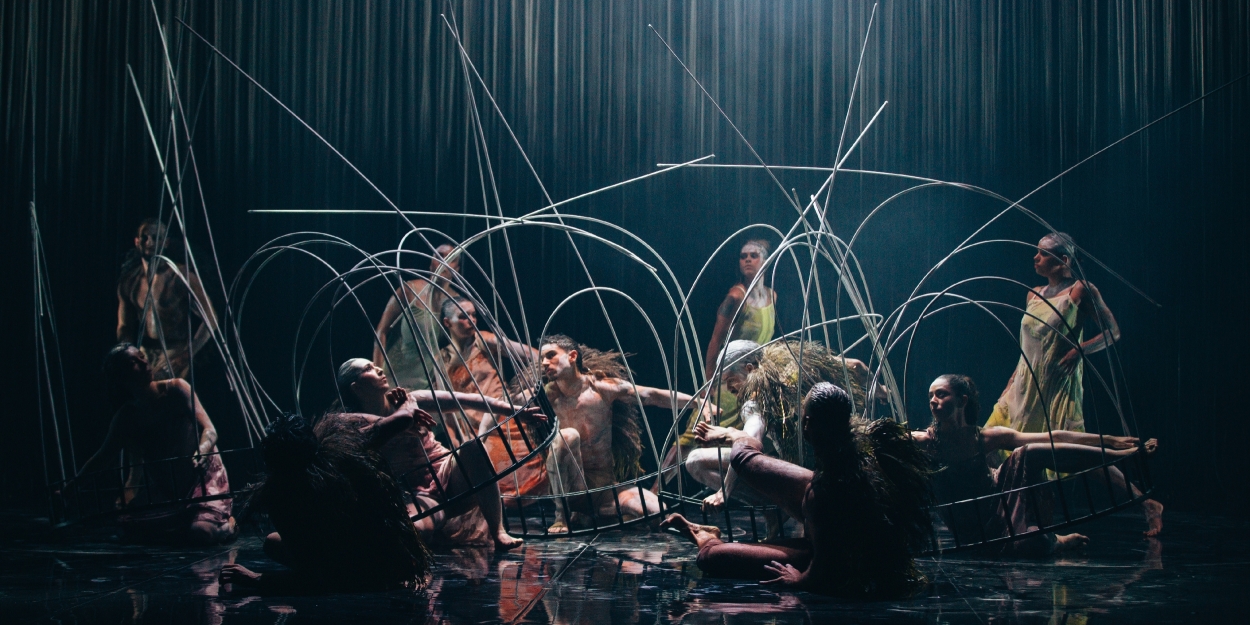Review: YULDEA. at Her Majesty's Theatre, Adelaide Festival Centre
A First Nation's story of loss, told in dance

Reviewed by Ray Smith, Thursday 11th August 2023.
For Aboriginal and Torres Strait Islander readers: this review contains the names of persons who have died.
Bangarra Dance Theatre’s Yuldea tells just one of the stories of the collisions between the ancient and established cultural traditions of the Anangu of the Great Victorian Desert and the Nunga of the Far West Region of South Australia, and the relentless and dispassionate march of western imperialism.
The performance began with the traditional welcome to country, delivered warmly in Kaurna and English, and gratefully accepted by the eager, capacity audience.
I had noticed, as my guest and I had waited for the doors to open, many familiar faces amongst the milling crowd, dance enthusiasts, fellow critics, and a great many people from the APY Lands to our north, who had braved the 12-hour bus trip from their traditional lands to witness this extraordinary event.
The scene was set by Artistic Director and Kokatha woman, Frances Rings, and her mother, Mima Smart, who told us the story of the forced dispossession of the people of Ooldea, also known traditionally as Yooldil Kapi, to allow the progress of the Trans-Australian Railway, and the later nuclear testing at Maralinga that devastated both the land and the people who lived and relied upon it. “It was a really, really sad day for our families to leave Ooldea”, Mima Smart told us. “They enjoyed living there, but that was gone. Our families were lost and didn't know what place they were going to.”
The self-taught anthropologist and activist, Daisy Bates, documented some of these clashes from her campsite at Ooldea and the stories are not pleasant ones, but if we are ever really to come together with First Nations Peoples these stories and their bitter truths must be told.
To say that I was excited to see this performance would be a massive understatement for, while I had seen footage of Bangarra Dance Theatre in the past, I had never witnessed the company performing live. I was not disappointed.
Elizabeth Gadsby's set design appeared misleadingly simple, with a curved backdrop of fabric strips, a large suspended arc covered in wrapped cloth like a bandaged limb hung above a stage floor that reflected like water, all shielded by a dark transparent curtain separating the audience and performers.
Leon Rodgers' soundscape was deeply complex and foreboding as the first of the dancers appeared on stage, distant and isolated behind the transparent curtain, leaving me with the feeling of being a voyeur at a gathering that I was not invited to.
Karen Norris' lighting was subtle and non-invasive during choreographer Rings's opening gambit, but the depth of that subtlety was yet to be revealed as the brilliant collaboration of lighting, set design, and soundscape would feature very heavily as the performance progressed.
The dancers themselves explode on stage in athletic, relentless physicality that belies the frailty and limitations of the human form, as their beautifully controlled movements defy gravity in Rings's faultless choreography. How Jennifer Irwin's brilliant costumes survive the ordeal is a question that is impossible to answer, and there were many costume changes as the story unfolded.
There were elements of traditional movements in some of the pieces that featured multiple dancers on stage, for this is a very large ensemble, that whispered of the past, but with an insistence and urgency that spoke of a forced secrecy, a mindful and deliberate masking of the past, of a truth that must be revealed.
I am quite sure that every member of the audience saw different images in their minds throughout the performance, but I saw birds and dingoes, I saw conflict and resolution, I saw dispossession inflicted and shelter offered, long journeys undertaken, that ended in bewilderment and loss, and even death.
Gadsby's transparent veil-like curtain, once lifted, revealed a starkness, a barrenness void of shelter or sustenance, the dancers appearing on the stage from every angle through the backdrop of fabric strips, like ghosts walking through walls, as an emotionless British voice cut through Rodgers's terrifying score and enunciated the malevolent intent of the occupying force.
Dancers burst through the backdrop frantically seeking escape or reunion, only to be dragged mercilessly back by ropes. Chaos and panic ensue as they are ripped from their homeland disenfranchised and desperate.
Lightning seemed to flash across the stage behind the amorphous backdrop, via a secret technique known only to Karen Norris and Elizabeth Gadsby, as loud booms and crashes split the air and the devastation of the Maralinga atomic tests finally shattered the physical connection between people and land, at the cost of their tradition, their spirituality, their very souls and a great many lives. Ash rains down onto the prone form of a dancer, huddled in disbelief, pain, and loss, and my mind went back to hearing the late First Nations Leader, Yami Lester, speak of the coming of the Black Mist, that robbed him of his sight.
The soundtrack shifted as a song by award-winning duo, Electric Fields, filled the air, and the mood seemed to shift with it. Was it hope that I felt? Was it resolution and a determined girding of the loins that I perceived?
This was just one of the many stories that must be told, and not just amongst First Nations communities. Just as Mima Smart told us, “It is important that these stories are told for our next generation”, they must be told to everyone in every community across Australia and the rest of the world.
You have an opportunity to see and hear some of these stories told, and I urge you to seize that opportunity by witnessing this extraordinary event yourself.
Reader Reviews

Videos
